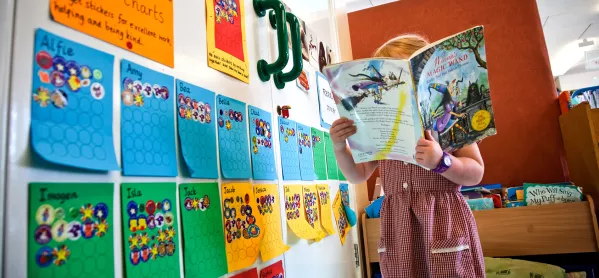- Home
- 7 ways to support EAL learning in primary
7 ways to support EAL learning in primary

Imagine sitting down to a task you really want to succeed at, then finding that the whole thing is presented to you in Ancient Greek.
You must somehow translate the symbols on the paper in front of you in order to complete your work. Where would you begin? How would you feel? Bewilderment would quickly give way to frustration. And from there, things can spiral downwards.
It’s an extreme example, but for learners with English as an additional language (EAL), this can be a familiar experience. While the term EAL is very broad - and encapsulates children with very different language capabilities - we need to be mindful of how it feels to be locked out of a lesson by the words being used.
Quick read: How to ensure EAL learners are making progress
Quick listen: Why the term EAL can be ‘reckless’
Want more articles like this? Join our Tes Teaching and Learning Facebook group
Teachers get very little training in this area. As an NQT, I asked my headteacher when the interpreter would be arriving. This seemed a perfectly reasonable question upon meeting my new class, which included three lovely children who spoke not a word of English.
But the reality for many teachers is that the interpreter never arrives, and neither do many of the lovely shiny resources advertised so temptingly in the education catalogues.
So what can we do?
1. Language passports
When a learner has no or extremely little English language, I have found language passports useful. The pupil collects words and phrases across the curriculum with translations into their first language. I usually focus on a limited number of keywords and phrases per week, building up their vocabulary over time. This can be academic, subject or social language, depending on need.
2. Focus on where the child excels
Find the things the child clearly enjoys. For example, one pupil may quickly show confidence in trying out spoken English in the classroom, but be unwilling to produce writing. Another may listen attentively but silently for months, while showing clear signs of engagement with print. Praise and development in specific areas in which the child is engaging can be really useful.
3. Make sure learning is reciprocal
Learners new to the country will bring rich cultural heritage with them. We have spent many happy hours in our class replicating traditional Afghan embroidery with the help of parents and grandparents. For many children, this linking of their language and culture, coupled with the opportunity to teach their classmates a thing or two, helps to dispel the fear of failure.

4. Communicate with parents
Take the time to explain to parents or carers how the child has been getting on - communication here is key. Invite them into your school community. They might appreciate the opportunity to become involved and bring their own skills. One family we worked with had a father who had been a surgeon in Libya, another a mother who was an air-traffic controller before coming to the UK.
5. Enable other ways to show understanding
Teachers may have to find inventive ways to record the learning rather than just writing. Oral presentations and arts and crafts can be really good ways to show understanding without having to rely on written English.
6. Supplement lessons with images
Visuals such as pictures and photographs can help all learners make more sense of new information when they are used well. For those with EAL, they can be a lifeline. But you should also take some time to think about the language demands of your curriculum (both oral and written) and provide scaffolding where appropriate.
7. Don’t succumb to poor practice
I once visited a school on a partnership day where two Lithuanian girls were the newest members of a Year 3 class. Each looked bewildered, but smiled shyly to each other across the classroom. I wasn’t there to observe them, but over the course of the day I couldn’t help noticing that they didn’t interact much with other children in the class, despite having been at the school for a few weeks already.
At playtime, an intuitive teaching assistant got them together to play a counting game with a skipping rope. I asked the teacher why they weren’t placed together in class. The answer? Because they’ll talk. In Lithuanian.
Perish the thought. Perhaps this comes back to one of my oldest teaching principles: I love and actively encourage pupil talk in my lessons. Because with the right guidance, in the right context, it can be wonderfully productive.
I have found great success in allowing children to communicate with each other in their first language. Embrace those differences and don’t miss wonderful opportunities.
Lucy Moss is a key stage 2 leader in an inner-city primary school
Further reading
- How vocabulary can help close the attainment gap
- How to support EAL learners
- EAL research from the EEF
Keep reading for just £1 per month
You've reached your limit of free articles this month. Subscribe for £1 per month for three months and get:
- Unlimited access to all Tes magazine content
- Exclusive subscriber-only stories
- Award-winning email newsletters



